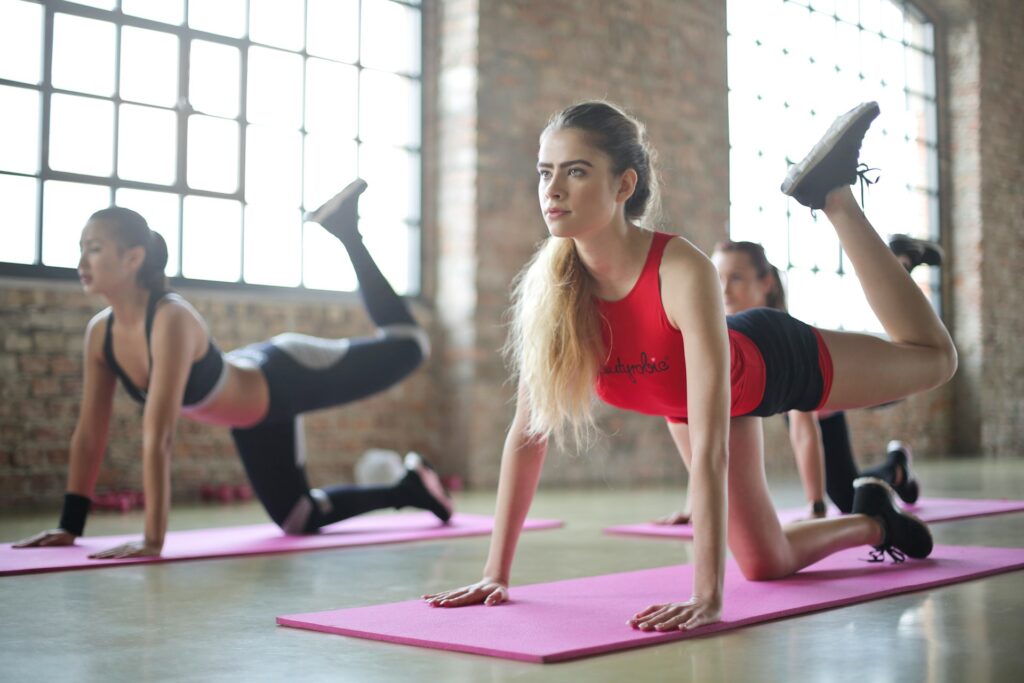Having a rounded, lifted booty is a goal for many women these days. Not only does a strong, muscular butt look great, but it also helps support good posture and prevent back pain. The glutes are some of the biggest, most powerful muscles in the body. With the right diet and training program, you can build noticeable mass in your backside over time.

If you want to take your glutes from flat to fab, I’ve put together a complete guide on the best butt workouts and tips that have worked for me. Read on to discover how to grow your glutes and get that coveted squat booty!
Perfect Posture Starts with Strong Glutes
Before we get into the nitty gritty, it helps to understand why butt muscles are so vital for good health beyond aesthetics. Your gluteus maximus, gluteus medius, and gluteus minimus are responsible for:
- Powerful extension of the hips
- Outward hip rotation
- Pelvic and core stabilization
When your glutes are weak or inactive, it can shift muscle balances throughout the body. The result is excessive load and tightness in the low back and hip flexors which tugs the pelvis forward. This misalignment causes the belly to pooch out and the butt to appear flat. Not cute!
By doing regular butt strengthening exercises, you’ll re-engage the glutes to pull the pelvis into better position. Say goodbye to back pain and bad posture! More benefits include:
- Increased calorie burn even at rest
- Improved athletic performance for sports like sprinting
- A perky, full rear view
Let’s get into how to activate those muscles for rounder, lifted buns!
Top Butt Exercises for Women

When targeting the butt, it’s important to focus on moves that isolate the glutes rather than other muscle groups. Compound exercises like squats are great but don’t fully hone in on the back of the body.
To prioritize butt gains, consider adding 2-3 of these best butt exercises into your routine:
Glute Bridges – Lying on your back with knees bent, thrust hips up to the sky, squeezing glutes at the top. Repeat for 15-20 reps.
Hip Thrusts – Same as glute bridge but with shoulders on a bench and driving through heels to lift hips. Use a barbell across hips for added weight.
Donkey Kickbacks – From all fours, kick one leg back behind you, engaging the glute. Do 10-15 reps then switch sides.
Leg Abductions – Attach ankle cuffs to a cable machine. Keeping leg straight, open out wide to the side. Repeat 12-15 times per side.
Choose 3 of these movements to follow your main squat or lunge moves 2-3 days a week. Over time, the focused training will enhance shape for a hot mama booty!
Nutrition Strategies for Your Best Butt

You won’t maximize your gains without proper fueling around workouts. Here are key diet strategies when glute building:
Before training: Eat carbohydrate-rich meal 2 hours beforehand to ensure adequate glycogen to power through the workout. Sweet or white potatoes are great pre-workout choices.
After training: Down a protein shake within 60 minutes post-sweat session. Adding protein powder to nut milk gives a good carb to protein balance to promote repair and growth.
Overall nutrition: Eat 0.7-1 gram of protein per pound of body weight daily. Get this from chicken, fish, tofu, eggs, protein supplements, and Greek yogurt. Timed around training, this adequate protein allows lifting-induced damage to transform into increased mass over time. Don’t neglect healthy fats either from oils, nuts and seeds to balance hormones.

With the right work for your backside along with proper nutrition, prepare for the gains! Have patience but stick with it. In 3 months’ time, I promise you’ll see an improvement in the mirror as you wave bye to a flat bum.
Hey there! We hope you love our fitness programs and the products we recommend. Just so you know, Symku Blog is reader-supported. When you buy through links on our site, we may earn an affiliate commission at no extra cost to you. It helps us keep the lights on. Thanks.
Disclaimer: The information provided in this discussion is for general informational and educational purposes only. It is not intended as medical or professional advice. Only a qualified health professional can determine what practices are suitable for your individual needs and abilities.
